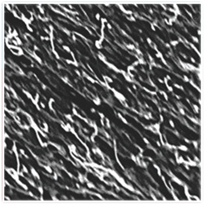Article contents
Protein-based functional nanocomposites
Published online by Cambridge University Press: 10 December 2020
Abstract

Protein materials are promising candidates as the building blocks for functional and high-performance bionanocomposites, owing to their unique and well-developed nanoscale structure, rich chemical functionality, excellent mechanical properties, biocompatibility, and biodegradability. Rational integration of protein materials with synthetic organic and inorganic nanomaterials through tailored interfacial interactions leads to synergistic enhancement in the properties compared to the individual components. In this article, we discuss the recent progress in protein-based nanocomposites, which aim to harness the unique structure and properties of proteins and synthetic nanomaterials for realizing advanced materials with greatly enhanced properties. Specifically, we highlight bionanocomposites based on two β-sheet rich proteins, silk fibroin and amyloid fibril, as representative examples as well as a few other protein materials such as keratin, elastin, and collagens. We describe the biotic–abiotic interfaces, processing methods, physical properties, and potential applications of these protein nanocomposites. Considering the additional value of renewability, abundancy, and ambient processability, such bionanocomposites are promising candidates for advanced and emerging applications, such as environmental remediation, biomedicine, biosensors, and photonics.
- Type
- Engineered Proteins as Multifunctional Materials
- Information
- MRS Bulletin , Volume 45 , Issue 12: Engineered Proteins as Multifunctional Materials , December 2020 , pp. 1017 - 1026
- Copyright
- Copyright © The Author(s), 2020, published on behalf of Materials Research Society by Cambridge University Press
References
- 11
- Cited by



